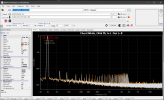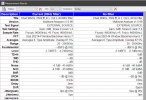tw99
Senior Member
As a result of this thread Tony from miniDSP reached out to me unprompted and gave me an updated firmware for the 2x4HD to test out.
This firmware implemented two improvements: 1) changed the gain structure so volume control acts before ASRC meaning you can use attenuation in the miniDSP to eliminate intersample over clipping and 2) modified IIR assembly code to improve performance with low frequency EQ. As I understand similar firmware improvements are available for the Flex/SHD/DDRC-24 platforms.
...
Overall some really nice improvements in performance and love that they reached out and fixed this issue unprompted.
Michael
There doesn't yet seem to have been a MiniDSP software release that includes this fix. At least there's nothing in the latest release notes from March 2023 that suggests it was included in the last release.




